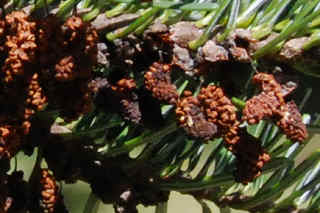 |
| Klootchy Creek Giant |
 |
| Cape Meares Spruce |
Another notable Sitka spruce at Cape Meares is the Octopus Tree. Its branches were bent when it was younger so that they grew out and then up, forming the shape of an octopus. This was evidently a special meeting place of Tillamook tribal natives. Now it has a massive base with huge limbs reaching out from the trunk before they ascend to over 100 feet. It's located and the end of a short trail that leads up from the parking lot at the lighthouse.
 |
| Octopus Tree at Cape Meares |
 |
| Cape Perpetua Giant Spruce |
Finally, if you want to see the world champion Sitka spruce, now you will have to drive up the coast of Washington to the south shore of Lake Quinault. It's at the end of a short trail next to Rain Forest Resort Village.
 |
| Lake Quinault Spruce |
____________________
References
Klootchy Creek Giant Sitka Spruce
Cape Meares Big Spruce
Cape Perpetua Giant Spruce
Lake Quinault Spruce


